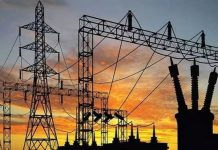KARACHI: The Sindh government has launched Sindh Green Fund (SGF) as part of its efforts to boost renewable energy usage in the province.
The provincial government has allocated special funds for this project in the current financial year (FY24), which would be employed to maintain, renovate and rehabilitate public parks, ensuring that these spaces continue to serve as green lungs for urban areas and peaceful retreats for citizens.
“The government is tackling the energy crisis by making use of alternate energy sources. We have abundant solar energy, which may be utilised to solarise buildings and installations,” said Munawar Latif, Director of the Sindh Energy Department.
In an interview with media, he said that so far 1,180 villages had been electrified at a cost of Rs1.3 billion. “We have planned to install solar potential measuring masts at six different locations to help solarise 669 public schools in 10 districts, including Kamber Shahdadkot, Dadu, Shikarpur, Shaheed Benazirabad, Larkana, Tharparkar, Umerkot, Sanghar, Badin and Sujawal. He said six prisons across the province and 180 primary health facilities and seven pumping stations in Tharparkar would also be put on solar energy.
Latif said budget estimates for environment and energy-related activities for FY24 were around Rs46.1 billion, a 46% increase over last year’s allocation of Rs31.45 billion.
He said that SGF was launched by the Sindh Renewable Energy Company (Pvt.) Ltd, which is a publicly-owned private company, established in 2012 under the Company’s Ordinance 1984 of the government of Pakistan.
“The company owned by the government of Sindh was established for exploiting commercial business opportunities available in the field of renewable energy, but not limited to it,” he added.
Globally, power demand rose fast, energy costs went up and global pressure to reduce environmental damage from fossil fuels led to more use of renewable energy resources. “Among renewable energy resources, wind and solar energy are the most dominant choices. These resources are environment-friendly, renewable and inexpensive choices and are rapidly adopted by developing countries,” he said.
The Sindh province has identified economically viable wind energy potential of 55,000MW in Thatta and Jamshoro districts, just 60 kilometres from Karachi, with an ideal wind speed of 6-8m/sec for power development. The Umer Kot and Tharparkar districts are also potential sites linked with same corridor for exploring wind energy potential.
The identification of solar energy potential and its realisation is part of efforts at the national level to exploit the potential of renewable energy as the central government’s renewable energy policy envisages generating 60% of the country’s energy from renewable resources by 2030.
Both Sindh and Balochistan have been recognised as having a substantial amount of untapped potential for wind resources, which can help the country tackle the energy crisis. –INP





